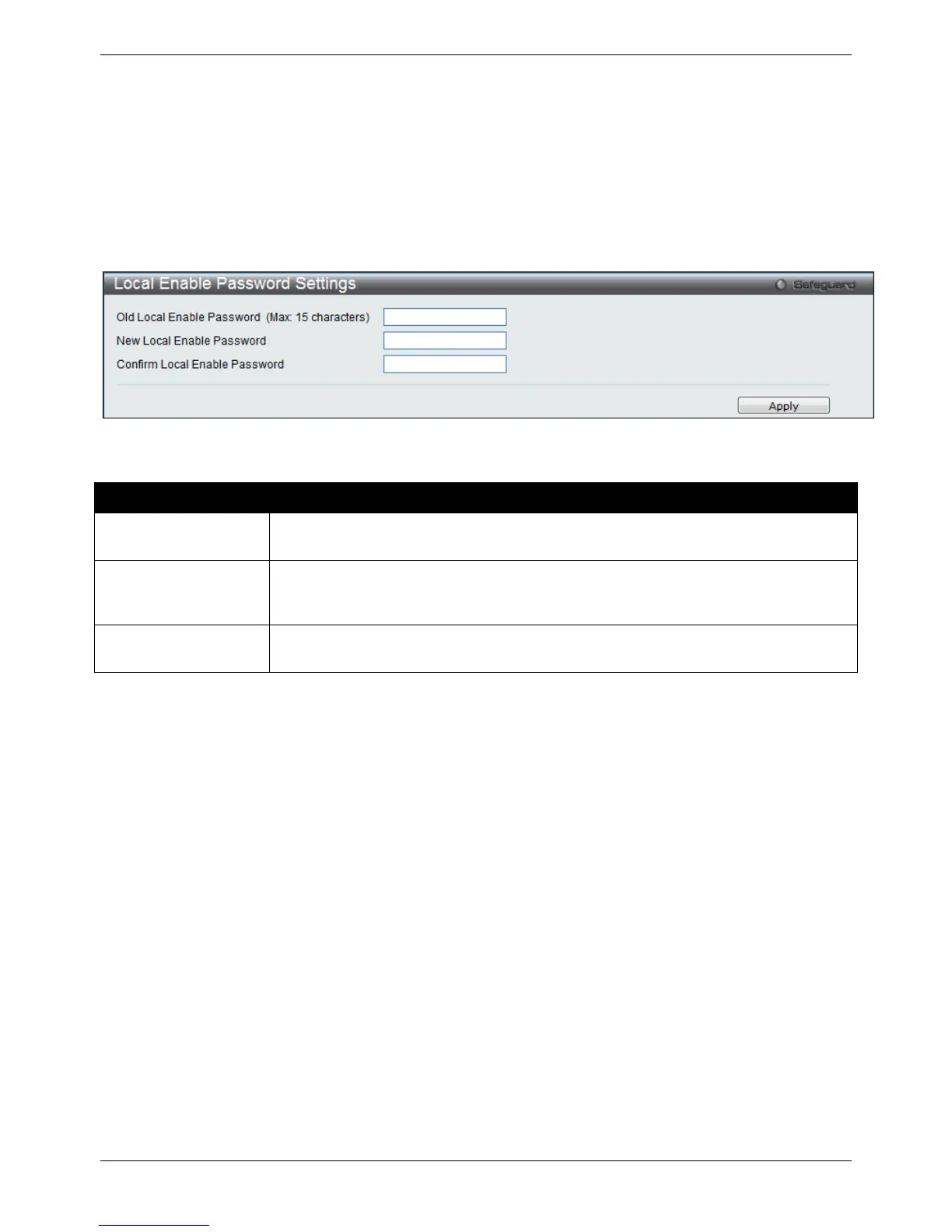xStack® DES-3528/DES-3552 Series Layer 2 Managed Stackable Fast Ethernet Switch Web UI Reference Guide
272
Local Enable Password Settings
Users can configure the locally enabled password for Enable Admin. When a user chooses the "local_enable"
method to promote user level privileges to administrator privileges, he or she will be prompted to enter the
password configured here that is locally set on the Switch.
To view this window, click Security > Access Authentication Control > Local Enable Password Settings, as
shown below:
Figure 8-67 Local Enable Password Settings window
The fields that can be configured are described below:
Parameter Description
Old Local Enable
Password
If a password was previously configured for this entry, enter it here in order to change it
to a new password
New Local Enable
Password
Enter the new password that you wish to set on the Switch to authenticate users
attempting to access Administrator Level privileges on the Switch. The user may set a
password of up to 15 characters.
Confirm Local Enable
Password
Confirm the new password entered above. Entering a different password here from the
one set in the New Local Enabled field will result in a fail message.
Click the Apply button to accept the changes made.
SSL Settings
Secure Sockets Layer, or SSL, is a security feature that will provide a secure communication path between a host
and client through the use of authentication, digital signatures and encryption. These security functions are
implemented through the use of a cipher suite, which is a security string that determines the exact cryptographic
parameters, specific encryption algorithms and key sizes to be used for an authentication session and consists of
three levels:
1. Key Exchange: The first part of the Ciphersuite string specifies the public key algorithm to be used. This
switch utilizes the Rivest Shamir Adleman (RSA) public key algorithm and the Digital Signature Algorithm
(DSA), specified here as the DHE DSS Diffie-Hellman (DHE) public key algorithm. This is the first
authentication process between client and host as they “exchange keys” in looking for a match and
therefore authentication to be accepted to negotiate encryptions on the following level.
2. Encryption: The second part of the cipher suite that includes the encryption used for encrypting the
messages sent between client and host. The Switch supports two types of cryptology algorithms:
a. Stream Ciphers – There are two types of stream ciphers on the Switch, RC4 with 40-bit keys and
RC4 with 128-bit keys. These keys are used to encrypt messages and need to be consistent
between client and host for optimal use.
b. CBC Block Ciphers – CBC refers to Cipher Block Chaining, which means that a portion of the
previously encrypted block of encrypted text is used in the encryption of the current block. The
Switch supports the 3DES EDE encryption code defined by the Data Encryption Standard (DES) to
create the encrypted text.

